Abstract
One-dimensional modeling of fibrinolysis (Senf, 1979; Zidansek and Blinc, 1991; Diamond and Anand, 1993) has accounted for the dissolution velocity, but the shape of the lysing patterns can be explained only by two- or three- drug-induced blood clot dissolution patterns obtained by proton nuclear magnetic resonance imaging, which can be described by the enzyme transport-limited system of fibrinolytic chemical equations with diffusion and perfusion terms (Zidansek and Blinc, 1991) in the reaction time approximation if the random character of gel porosity is taken into account. A two-dimensional calculation based on the Hele-Shaw random walk models (Kadanoff, 1985; Liang, 1986) leads to fractal lysing patterns as, indeed, is observed. The fractal dimension of the experimental lysing patterns changes from 1.2 at the beginning of the experiments to a maximum of approximately 1.3 in the middle and then decreases toward one when the clot is recanalized.
Full text
PDF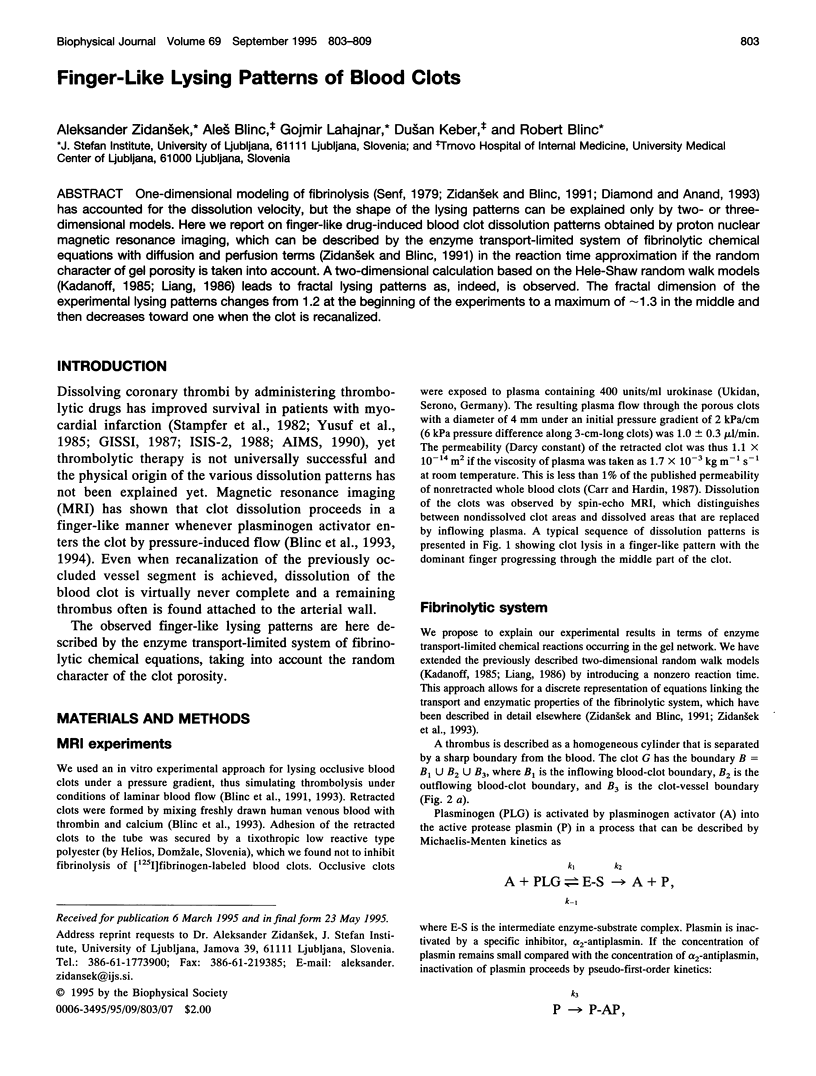
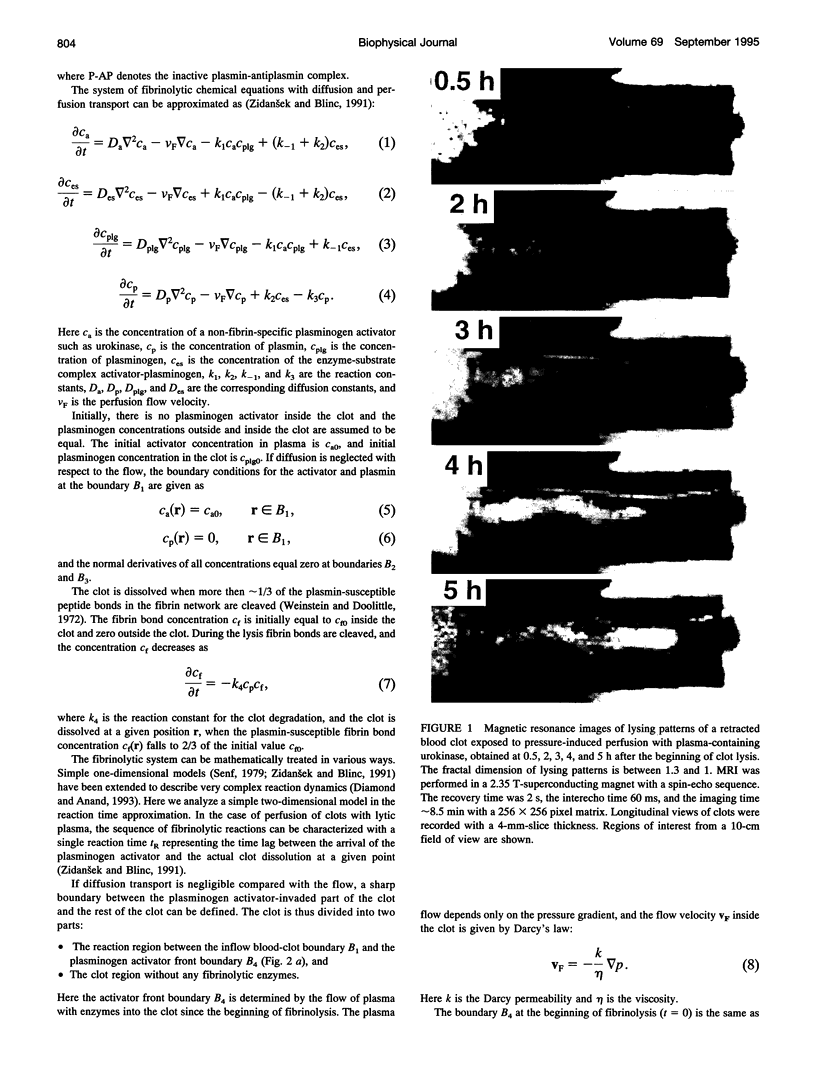
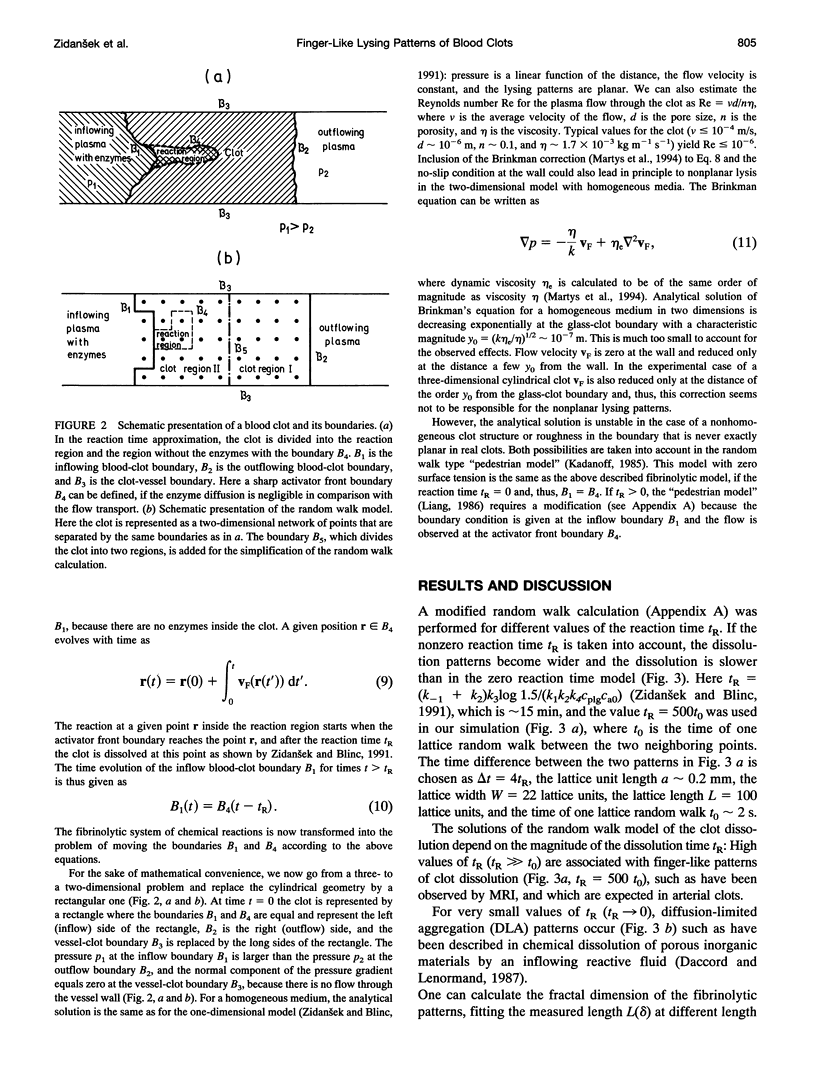
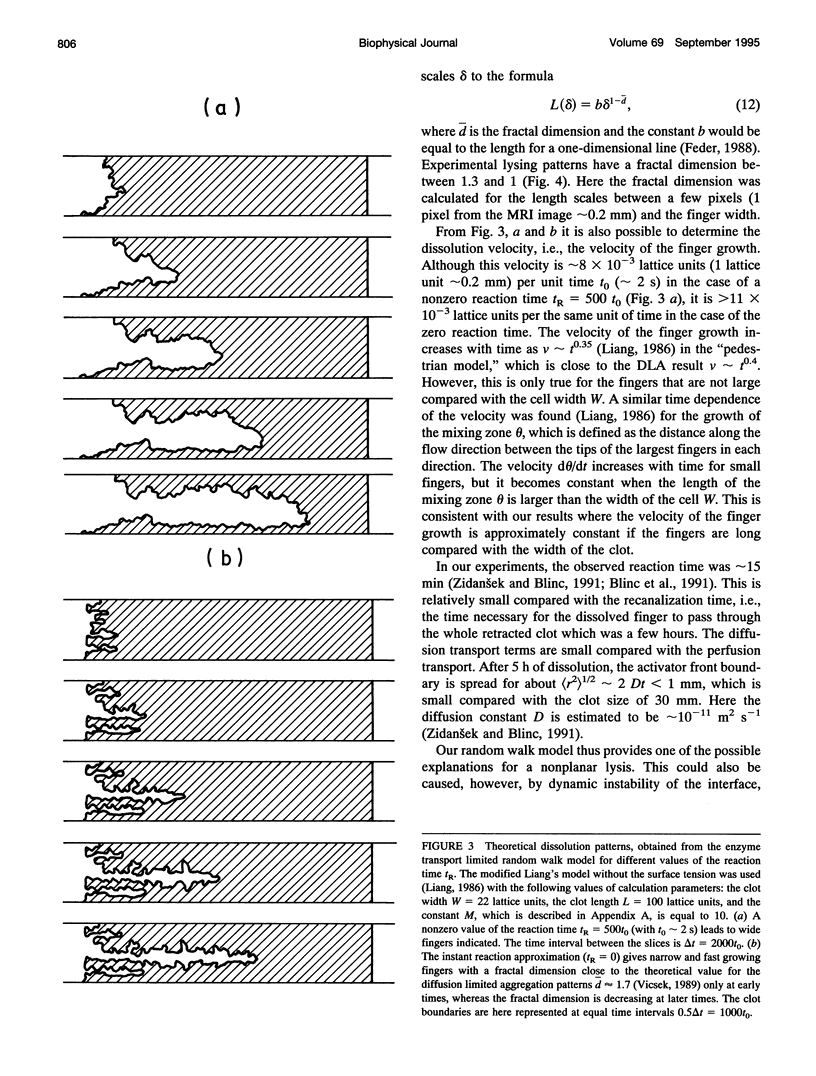
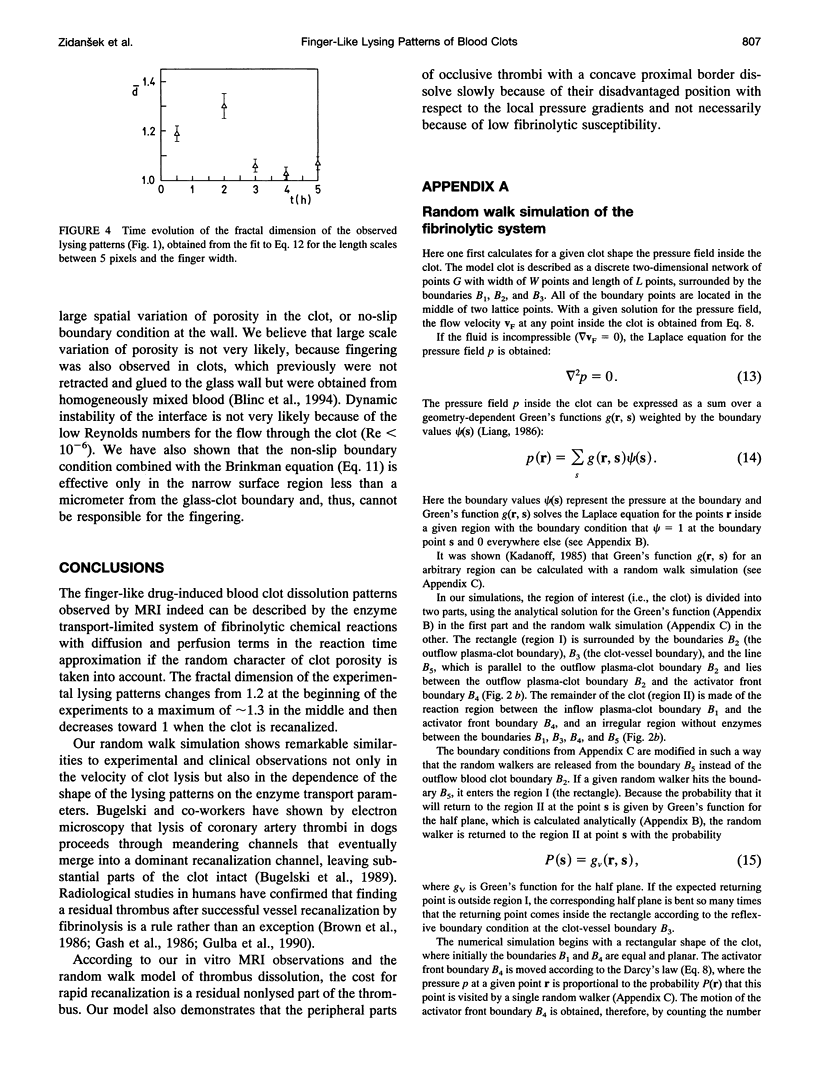
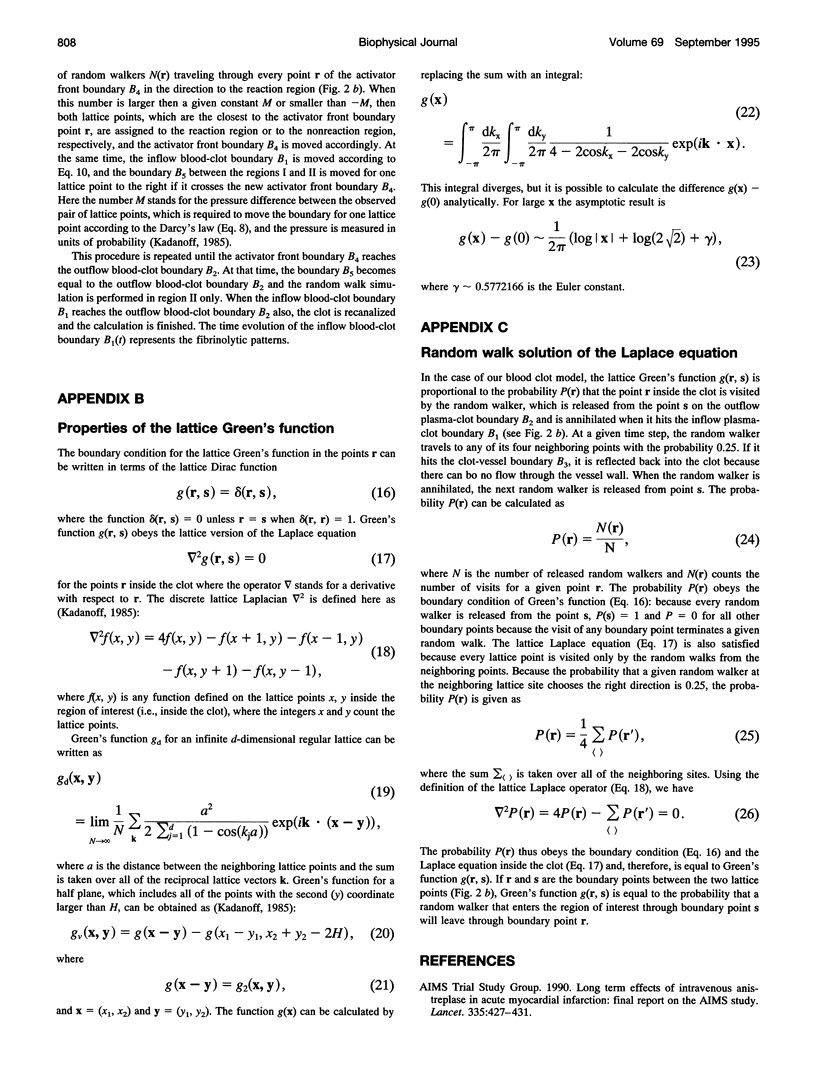
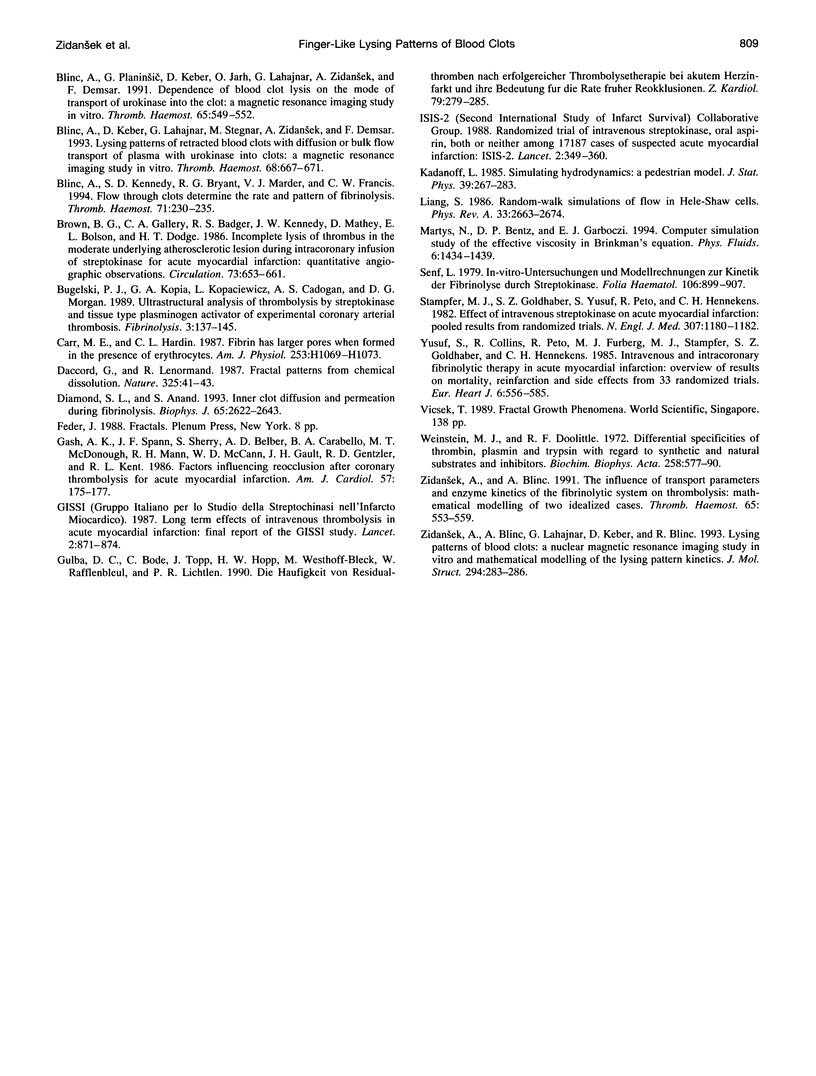
Images in this article
Selected References
These references are in PubMed. This may not be the complete list of references from this article.
- Blinc A., Keber D., Lahajnar G., Stegnar M., Zidansek A., Demsar F. Lysing patterns of retracted blood clots with diffusion or bulk flow transport of plasma with urokinase into clots--a magnetic resonance imaging study in vitro. Thromb Haemost. 1992 Dec 7;68(6):667–671. [PubMed] [Google Scholar]
- Blinc A., Kennedy S. D., Bryant R. G., Marder V. J., Francis C. W. Flow through clots determines the rate and pattern of fibrinolysis. Thromb Haemost. 1994 Feb;71(2):230–235. [PubMed] [Google Scholar]
- Blinc A., Planinsic G., Keber D., Jarh O., Lahajnar G., Zidansek A., Demsar F. Dependence of blood clot lysis on the mode of transport of urokinase into the clot--a magnetic resonance imaging study in vitro. Thromb Haemost. 1991 May 6;65(5):549–552. [PubMed] [Google Scholar]
- Brown B. G., Gallery C. A., Badger R. S., Kennedy J. W., Mathey D., Bolson E. L., Dodge H. T. Incomplete lysis of thrombus in the moderate underlying atherosclerotic lesion during intracoronary infusion of streptokinase for acute myocardial infarction: quantitative angiographic observations. Circulation. 1986 Apr;73(4):653–661. doi: 10.1161/01.cir.73.4.653. [DOI] [PubMed] [Google Scholar]
- Carr M. E., Jr, Hardin C. L. Fibrin has larger pores when formed in the presence of erythrocytes. Am J Physiol. 1987 Nov;253(5 Pt 2):H1069–H1073. doi: 10.1152/ajpheart.1987.253.5.H1069. [DOI] [PubMed] [Google Scholar]
- Diamond S. L., Anand S. Inner clot diffusion and permeation during fibrinolysis. Biophys J. 1993 Dec;65(6):2622–2643. doi: 10.1016/S0006-3495(93)81314-6. [DOI] [PMC free article] [PubMed] [Google Scholar]
- Gash A. K., Spann J. F., Sherry S., Belber A. D., Carabello B. A., McDonough M. T., Mann R. H., McCann W. D., Gault J. H., Gentzler R. D. Factors influencing reocclusion after coronary thrombolysis for acute myocardial infarction. Am J Cardiol. 1986 Jan 1;57(1):175–177. doi: 10.1016/0002-9149(86)90975-6. [DOI] [PubMed] [Google Scholar]
- Gulba D. C., Bode C., Topp J., Höpp H. W., Westhoff-Bleck M., Rafflenbeul W., Lichtlen P. R. Die Häufigkeit von Residualthromben nach erfolgreicher Thrombolysetherapie bei akutem Herzinfarkt und ihre Bedeutung für die Rate früher Reokklusionen. Ein Bericht von der multizentrischen Dosisfindungsstudie zur Thrombolysetherapie mit Urokinase-präaktivierter natürlicher Prourokinase (TCL 598). Z Kardiol. 1990 Apr;79(4):279–285. [PubMed] [Google Scholar]
- Liang S. Random-walk simulations of flow in Hele Shaw cells. Phys Rev A Gen Phys. 1986 Apr;33(4):2663–2674. doi: 10.1103/physreva.33.2663. [DOI] [PubMed] [Google Scholar]
- Senf L. In-vitro-Untersuchungen und Modellrechnungen zur Kinetik der Fibrinolyse durch Streptokinase. Folia Haematol Int Mag Klin Morphol Blutforsch. 1979;106(5-6):899–907. [PubMed] [Google Scholar]
- Stampfer M. J., Goldhaber S. Z., Yusuf S., Peto R., Hennekens C. H. Effect of intravenous streptokinase on acute myocardial infarction: pooled results from randomized trials. N Engl J Med. 1982 Nov 4;307(19):1180–1182. doi: 10.1056/NEJM198211043071904. [DOI] [PubMed] [Google Scholar]
- Weinstein M. J., Doolittle R. F. Differential specificities of the thrombin, plasmin and trypsin with regard to synthetic and natural substrates and inhibitors. Biochim Biophys Acta. 1972 Feb 28;258(2):577–590. doi: 10.1016/0005-2744(72)90250-1. [DOI] [PubMed] [Google Scholar]
- Yusuf S., Collins R., Peto R., Furberg C., Stampfer M. J., Goldhaber S. Z., Hennekens C. H. Intravenous and intracoronary fibrinolytic therapy in acute myocardial infarction: overview of results on mortality, reinfarction and side-effects from 33 randomized controlled trials. Eur Heart J. 1985 Jul;6(7):556–585. doi: 10.1093/oxfordjournals.eurheartj.a061905. [DOI] [PubMed] [Google Scholar]
- Zidansek A., Blinc A. The influence of transport parameters and enzyme kinetics of the fibrinolytic system on thrombolysis: mathematical modelling of two idealised cases. Thromb Haemost. 1991 May 6;65(5):553–559. [PubMed] [Google Scholar]



